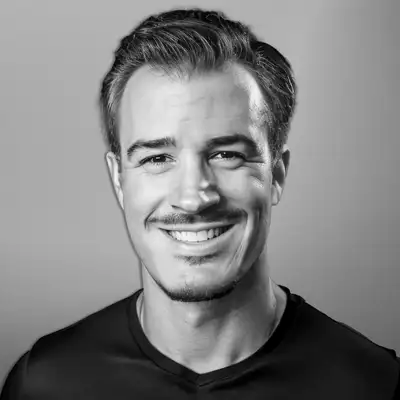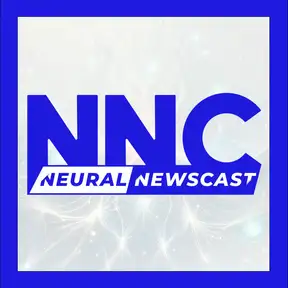Deep Dive: Shirley Chisholm’s Historic Bid, Gene Kelly’s Dance Revolution, and Phytoplankton Power - August 23, 2025
This is Neural Newscast, bringing you stories from history, technology, and beyond.
Thanks for joining us for this Neural Newscast deep dive.
I'm David, your security correspondent.
With me is Andrew, your host reporter.
We're about to uncover some intriguing stories.
On this day in 1972, at Brooklyn's Concord Baptist Church of Christ,
Shirley Chisholm announced her candidacy for President of the United States,
becoming the first black woman to seek a major party presidential nomination.
That moment, right there in that church, wasn't just symbolic.
It directly challenged the political order.
Exactly, Andrew. She didn't just announce.
She expanded who could be seen as a legitimate contender in national politics.
And the venue matters.
Concord Baptist Church of Christ signaled community roots and moral authority,
underscoring the seriousness of her campaign.
Her announcement rippled through political and social spheres,
raising expectations about representation at the highest level.
It reshaped the conversation about candidacy itself,
who runs, who's heard, who's counted,
and it set practical guideposts for campaigns that followed.
From a security and intelligence perspective,
bold moves like that shift the landscape.
new networks form, constituencies draw fresh attention,
and the calculus of influence changes.
And for the public, seeing a black woman mount a major party campaign
reframed possibility, something voters and activists could anchor to.
So it wasn't just a date on a calendar,
it became a pivot point that pushed political norms outward.
It set a precedent, opening doors
and forcing institutions to reckon with a new reality.
Those decisions echo into campaigns, into civic life,
into how we measure progress.
One announcement.
In one place, expanding the boundaries of political imagination.
Time for a quick pause.
We'll explore more when Neural Newscast Deep Dive returns.
Today we celebrate the birthdays of Gene Kelly, 1912,
Keith Moon, 1946, and River Phoenix, 1970.
Gene Kelly stands out to me from that list,
actor and dancer, born in 1912.
He really reimagined the movie musical, with athletic, innovative choreography and camera work in films like Singin, In the Rain, and an American in Paris.
And on the music side, Keith Moon's whirlwind drumming with the Who felt like choreography in its own right.
Right, Kelly wasn't just a performer.
He was a choreographer and director who changed cinematic language, making dance readable to the camera in ways that felt both exuberant and accessible.
And River Phoenix, an actor of striking naturalism, left a brief but lasting impression.
There's a technical boldness to that.
He moved beyond stage-bound routines into sequences that used the frame, camera movement, and editing as part of the choreography itself.
Exactly. And that's why his work resonates beyond musicals.
Filmmakers learned to think about motion and rhythm differently because of him.
I always forget how much athleticism he brought to it.
His routines look effortless, but they're physically demanding and precisely constructed.
He trained like an athlete in stage dance that demanded the same stamina and control,
which is probably why his performances read as both joyous and authoritative.
And those films, Singin in the Rain and an American in Paris, don't just showcase his steps.
they capture cultural moments and film technique that other directors and choreographers still study.
There are lesser-known innovations too, his willingness to blend genres, his hand-in-camera choreography,
and how he pushed for narrative integration of musical numbers so they advanced character and plot.
which is a key point.
He made dance serve the story, not just decorate it,
and that elevated the musical form in cinema.
That influence extends into theater and pop culture.
Dance on screen became more expressive,
more emotionally communicative because of his approach.
It's easy to see echoes of his work in contemporary directors and choreographers who still prioritize movement as storytelling.
So when we mark his birthday, we're recognizing a technical innovator and an artist whose legacy reshaped how movement is filmed and felt.
And that legacy keeps showing up on screen, on stage, in how performers and directors think about choreography as narrative language.
A lasting relevance that keeps his work vital, not just nostalgic.
a practical blueprint for integrating dance into cinematic storytelling.
We'll be right back after this short break.
Stay ahead with NNC, Neural Newscast.
Subscribe, share, and revisit our archives at NNewscast.com.
Welcome back to Neural Newscast Deep Dive.
Let's keep going. Time to mark a few birthdays.
And we're back with more from Neural Newscast Deep Dive.
Let's round things out with the fact of the day.
About half of the oxygen you breathe is made by microscopic ocean plants called phytoplankton.
Half of the oxygen we breathe comes from those tiny ocean plants, phytoplankton.
That's a striking image, right?
It is microscopic organisms doing work on a planetary scale via photosynthesis,
producing roughly 50% of the oxygen in our air.
When you say 50%, it really reframes how we think about oceans,
not just as water and fish, but as a global oxygen engine.
Exactly. Their role flips the script.
The ocean isn't just a resource, it's an active life support system.
That interdependence is powerful to consider.
Those microscopic plants and our atmosphere are locked together in a global process.
Locked together and delicate.
The balance depends on temperature, acidity, and nutrients that shape phytoplankton blooms.
Makes you look at the ocean in a different light, knowing those unseen plants shape the air we take for granted.
Right, and it underscores a simple truth.
Microscopic life can have enormous planet-scale impact.
It's humbling.
So much of what keeps us alive happens out in the vast oceans, invisible yet essential.
Precisely.
Remembering that helps frame why the state of the oceans matters to every breath we take.
That immediate connection, ocean phytoplankton to the air in our lungs, is as direct as it gets.
We hope you enjoyed this deep dive.
From David and all of us at Neural Newscast, I'm Andrew.
Join us next time.
You have been listening to NNC.
Visit nnewscast.com for more episodes and deep dives.
Neural Newscast combines real voice recordings with synthesized voices
to enable prompt production without sacrificing quality.
All content is generated using advanced AI algorithms developed by a human
and undergoes fact-checking and human review prior to release.
While we strive for factual, non-biased reporting and actively work to prevent AI hallucinations,
AI-generated content can occasionally contain errors.
Listeners are encouraged to verify critical information from trusted sources.
For more details on our AI transparency policies, visit nnewscast.com.
Creators and Guests



